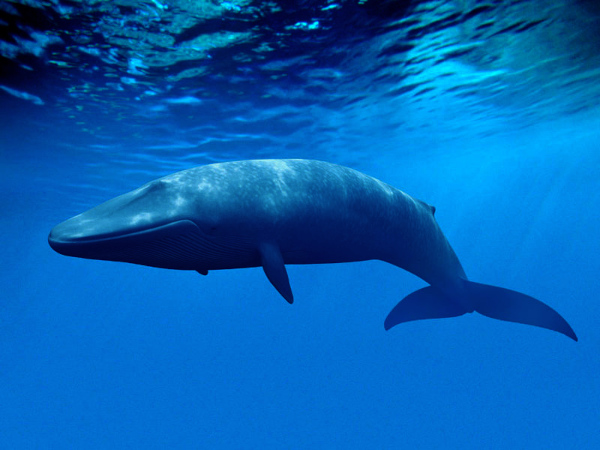In a rather surprising, yet exciting discovery, researchers have spotted a new population of blue whales swimming in the western Indian Ocean. The discovery is unique as the population was spotted from the unusual song sung by these exotic sea creatures.
Blue whales or Balaenoptera musculus are the largest living animals on the planet and they use songs to communicate and socialise. Blue Whales are often identified by their unique low-frequency sounds, which can be louder than a jet engine, with the pitch reaching up to 188 decibels, as per World Wildlife Fund (WWF). Therefore, the sounds made by the whales can be easily heard from a large distance and they usually last up to 35 minutes and sometimes even up to 22 hours. Moreover, each and every population of blue whales has its own unique song.
Dr Salvatore Cerchio, Director of the African Aquatic Conservation Fund’s Cetacean Program, first heard and recorded the sound of this unknown population in 2017, while he was working on a research project on Omura’s whales in the Mozambique Channel off Madagascar.
“It was quite remarkable to find a whale song in your data that was completely unique, never before reported, and recognize it as a blue whale,” said Dr Cerchio in a statement from New England Aquarium where he serves as a Visiting Scientist.
Furthermore, the team of researchers also noted the similar distinct sounds from the western Arabian Sea, off the coast of Oman, and the Chagos Archipelago in the central Indian Ocean. These locations are separated by a distance of nearly 3,500 kilometres of ocean. The researchers examined sound recording with the help of underwater hydrophone listening stations on these aforementioned locations to draw a conclusion.
“Before our recording effort off Oman, there were no acoustic data from the Arabian Sea, and so the identity of that population of blue whales was initially just a guess,” said Andrew Willson from Five Oceans Environmental Services LLC, who led the deployment of the recording units.
Until now, it was assumed that the region had just one single population of blue whales in the northern Indian Ocean. Therefore, all the whales found in this particular area and the Arabian Sea—found off Sri Lanka and ranges into the southcentral Indian Ocean—accounted to be part of one single population. Now, the researchers estimate that there are actually two populations of whales, which are roaming across various parts of the ocean.
The blue whale populations were reportedly on the verge of extinction around the globe during the 20th century. The Arabian Sea was a prime target for whaling—a practice of hunting and killing whales for products like meat and oil. As per reports, the number of blue whales dropped significantly from 2,50,000 to around 1,000 by the 1950s. Over the past few decades, the population is slowly growing after the signing of a global moratorium on commercial whaling in 1982.
Nevertheless, the findings of this study suggest that the vast oceans on Earth still host a diverse variety of marine organisms that are yet to be discovered.
The study was published in the journal Endangered Species Research and can be accessed here.
You may also like
-
New Heat-Based Approach To Cancer Treatment Can Reduce Chemotherapy Doses
-
Scientists Take A Major Step Towards Unification Of Classical & Quantum Gravity
-
India Graphene Engineering and Innovation Centre (IGEIC) Under the Vision of Viksit Bharat@2047 Launched
-
New High-Performance Gas Sensor can Monitor Low Level Nitrogen Oxides Pollution
-
Antidepressant Drug can be Repurposed for Treating Breast Cancer
